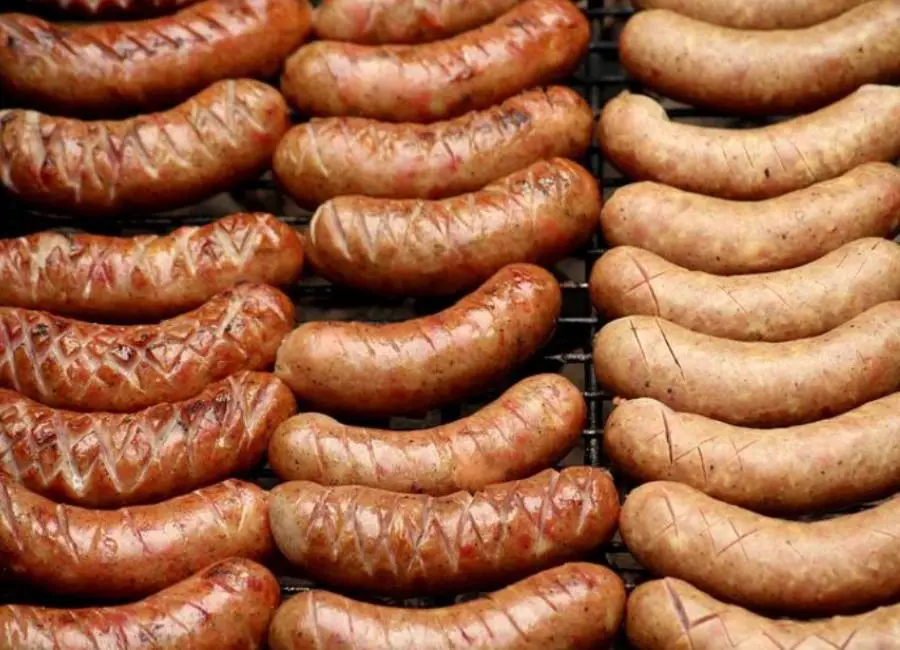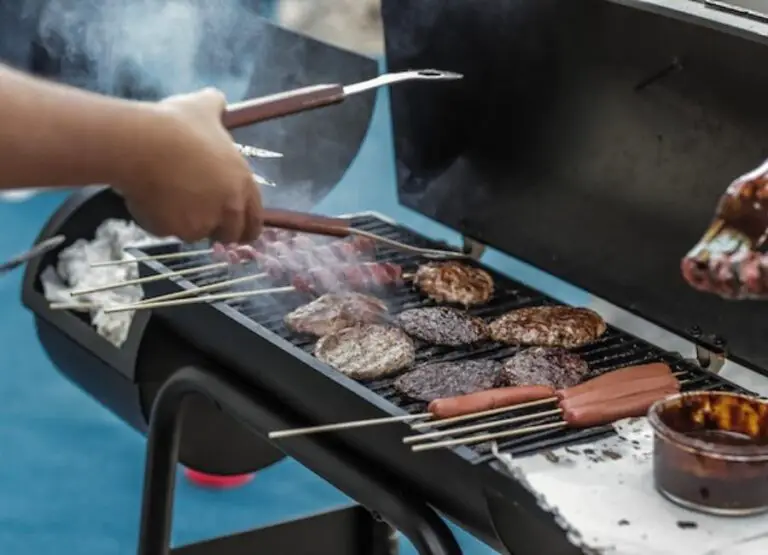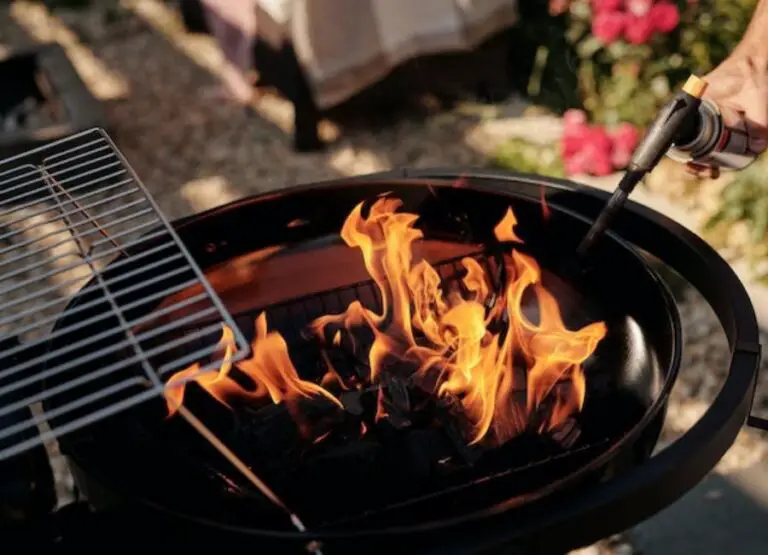How to Freeze Cooked Sausage [Step by Step Guide]
Have you ever wondered if freezing cooked sausage is a safe and convenient option for your furry friends? Well, wonder no more!
In this quick and informative blog post, we’ll dive into the ins and outs of freezing cooked sausage for your pets, so you can provide them with a tasty and hassle-free treat.
Let’s get started!
Benefits of Freezing Cooked Sausage
Freezing cooked sausage offers a multitude of benefits. Firstly, it provides convenience by allowing you to prepare large batches and store them for future use.
Secondly, it helps to reduce food waste as it extends the shelf life of cooked sausage, preventing it from spoiling.
Thirdly, freezing cooked sausage ensures that you always have a quick and delicious protein option readily available for meals or snacks.
Lastly, it saves time and effort by minimizing the need for frequent cooking, making meal planning and preparation significantly easier.
Freeze Cooked Sausage
Freezing cooked sausage is a great way to extend its shelf life and have a quick meal option on hand.
To freeze cooked sausage, allow it to cool completely, then divide it into individual portions and place them in airtight freezer bags or containers.
Label and date them before storing in the freezer for up to three months.
Let’s break it down further…
Step 1: Cook the sausage
To cook the sausage, you have several options. You can choose to boil, grill, bake, or pan-fry the sausages based on your preference and the equipment available to you.
Boiling: Place the sausages in a pot of boiling water and let them cook for about 15-20 minutes until they are fully cooked. This method is convenient and ensures even cooking.
Grilling: Preheat your grill to medium-high heat. Place the sausages on the grill and cook them for approximately 10-15 minutes, turning them occasionally until they are nicely browned and cooked through.
Baking: Preheat your oven to 400°F (200°C). Place the sausages on a baking sheet and bake them for around 20-25 minutes, flipping halfway through, until they are cooked through and browned.
Pan-frying: Heat a frying pan over medium heat and add a small amount of oil. Place the sausages in the pan and cook them for about 10-15 minutes, turning occasionally, until they are browned and cooked through.
Make sure to cook the sausages until they reach an internal temperature of 160°F (71°C) to ensure they are fully cooked and safe to eat.
Step 2: Allow the sausage to cool
After cooking the sausages, it’s important to let them cool completely before freezing.
This step is crucial to preserve the texture and prevent condensation from forming inside the packaging.
You can leave the sausages at room temperature for about 30 minutes to cool down naturally.
Alternatively, you can speed up the cooling process by placing them on a wire rack.
This allows air to circulate around the sausages, helping them cool faster.
Step 3: Portion the sausage
Decide on the portion size that suits your needs. Consider how you plan to use the sausage later on, whether it’s for a single meal or multiple servings.
If you prefer individual servings, divide the sausages into portions that are suitable for one person.
If you plan to use the sausages for a family meal or larger gathering, portion them accordingly.
Step 4: Wrap the sausage
Properly wrapping the sausages is crucial to protect them from freezer burn and maintain their quality.
Plastic wrap: Individually wrap each portion of sausage tightly in plastic wrap. Start by placing the sausage in the center of a piece of plastic wrap and roll it up tightly, making sure to remove any excess air.
Twist the ends of the plastic wrap to secure it. This method helps to prevent freezer burn and keeps the sausages fresh.
Freezer bags: Alternatively, you can place the portions in freezer-safe bags. Squeeze out as much air as possible before sealing the bags.
This method is convenient and allows for easy stacking in the freezer. You can also use a vacuum sealer if available to remove excess air before sealing the bags.
Vacuum sealing: If you have a vacuum sealer, it’s an excellent option to remove all the air from the packaging.
Vacuum sealing provides the best protection against freezer burn and helps to extend the shelf life of the sausages.
Step 5: Package the sausages
Once the sausages are wrapped, it’s time to package them for freezing. Airtight freezer bags or freezer-safe containers are ideal for this purpose.
If using freezer bags, squeeze out as much air as possible before sealing to prevent freezer burn.
If using containers, make sure they have a tight-fitting lid to prevent air and moisture from entering.
You can also use vacuum-sealed bags or a vacuum sealer to remove excess air and further protect the sausages.
Step 6: Label the sausage
Labeling the sausages is essential for organization and easy identification.
Use a permanent marker or freezer labels to clearly mark each package with the date and contents.
Include the date of freezing, so you can keep track of how long the sausages have been in the freezer.
Additionally, write down the type of sausage or any specific details that will help you identify them later on.
Step 7: Freeze the sausage
Transfer the packaged sausages to the freezer. Place them in the coldest part of the freezer, such as the back or the bottom shelf.
It’s essential to maintain a consistent freezing temperature of 0°F (-18°C) or below to ensure the sausages freeze quickly and maintain their quality.
Make sure there is enough space around the packages for proper air circulation and to prevent them from sticking together.
Step 8: Maintain storage duration
Cooked sausages can typically be stored in the freezer for up to three months.
However, for the best quality, it is recommended to use them within one to two months.
After this period, the sausages may start to lose flavor and texture.
Keep in mind that the storage duration may vary depending on the type of sausage and how well it was wrapped and stored.
It’s a good practice to rotate your frozen sausage stock, using the oldest ones first.
Always check for signs of freezer burn or any peculiar odors before consuming the sausages.
By following these steps, you can ensure that your cooked sausages are properly frozen and maintain their quality for future use.
Precautions to Take When Freezing Cooked Sausage
Here are some of the major precautions to keep in mind when freezing cooked sausage:
1. Cool it down: Before freezing, make sure to cool the cooked sausage completely. This helps prevent the growth of bacteria during the freezing process.
2. Package it properly: Use airtight containers or freezer bags to store the sausage. This helps to prevent freezer burn and maintain the quality of the sausage.
3. Portion it out: Divide the cooked sausages into individual or family-sized portions before freezing. This way, you can easily thaw and use only the amount you need, reducing waste.
4. Label and date: Always label your packages with the type of sausage and the date it was cooked. This makes it easier to keep track of how long it has been in the freezer and prevents confusion.
5. Use quality containers: Invest in good-quality freezer-safe containers or freezer bags that are designed to withstand freezing temperatures. This helps to maintain the integrity of the sausage and prevents freezer burn.
6. Remove excess air: When using freezer bags, squeeze out as much air as possible before sealing. This helps to prevent the growth of bacteria and keeps the sausage fresh.
7. Freeze at the right temperature: Set your freezer to a temperature of 0°F (-18°C) or below. This ensures that the sausage freezes quickly and maintains its flavor and texture.
8. Freeze in small batches: If you have a large quantity of cooked sausage, freeze it in smaller batches. Freezing in smaller portions allows for quicker freezing and thawing, reducing the risk of bacteria growth.
9. Keep a freezer inventory: Maintain a freezer inventory to keep track of what’s inside and when it was frozen. This helps you keep track of how long the cooked sausage has been frozen and ensures you use it within a reasonable time frame.
By following these precautions, you can be confident that your frozen cooked sausage will remain safe, flavorful, and ready to use whenever you need it.
Learn more about freezing sausage balls.
Related Questions
Can I freeze cooked sausage?
Yes, absolutely! Freezing cooked sausage is a great way to preserve its freshness and extend its shelf life. Just make sure to follow the proper freezing guidelines to maintain its quality.
How should I freeze cooked sausage?
To freeze cooked sausage, allow it to cool completely first. Then, wrap each individual sausage tightly in plastic wrap or aluminum foil. Place the wrapped sausages in a freezer-safe container or airtight freezer bags. Make sure to label and date the packages for easy identification later on.
How long can I keep frozen cooked sausage?
When stored properly, frozen cooked sausage can last for up to three months without significant loss in quality. However, for the best taste and texture, it’s recommended to consume it within one to two months.
Can I thaw frozen cooked sausage before reheating?
Yes, you can thaw frozen cooked sausage before reheating it. The safest way to thaw is by transferring it from the freezer to the refrigerator and letting it thaw overnight. Once thawed, you can reheat it using your preferred method, such as stovetop, oven, or microwave.
Can I reheat frozen cooked sausage?
Absolutely! Reheating frozen cooked sausage is simple. You can choose to reheat it on the stovetop by lightly frying or grilling it until heated through. Alternatively, you can also reheat it in the oven or microwave. Just make sure the sausage reaches an internal temperature of 165°F (74°C) for safe consumption.
Can I refreeze cooked sausage that has been thawed?
It is generally not recommended to refreeze cooked sausage that has been thawed. Each time you freeze and thaw food, it can affect its quality and texture. It’s best to plan your portions accordingly to avoid the need for refreezing. If you have leftover thawed cooked sausage, it’s safer to consume it within a few days rather than refreezing it.
Learn more about storing food in the refrigerator.
Conclusion
So there you have it, folks! Freezing cooked sausage is a game-changer. It’s a convenient way to have a tasty protein option on hand whenever you need it. So go ahead, cook up a batch, freeze it, and enjoy the deliciousness whenever you crave it – it’s a win-win for both you and your taste buds!


![Can I Freeze Cooked Green Beans And Potatoes [Hints]](https://foodcreeks.com/wp-content/uploads/2023/05/Can-I-Freeze-Cooked-Green-Beans-And-Potatoes-768x555.jpg)
![Cooking Raw Meat In Microwave [Explained]](https://foodcreeks.com/wp-content/uploads/2023/02/Cooking-Raw-Meat-In-Microwave-768x555.jpg)
![Can A High Protein Diet Cause Constipation [Answered]](https://foodcreeks.com/wp-content/uploads/2023/02/Can-A-High-Protein-Diet-Cause-Constipation-768x555.jpg)


